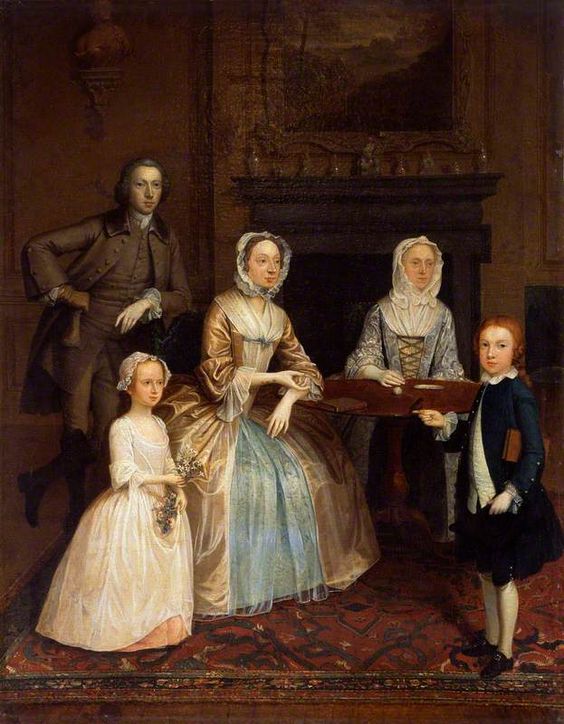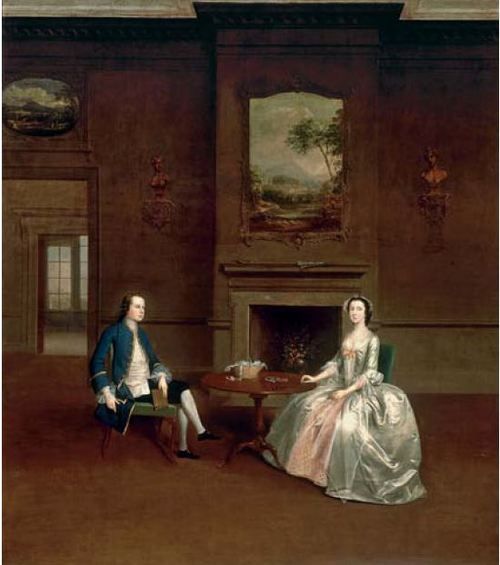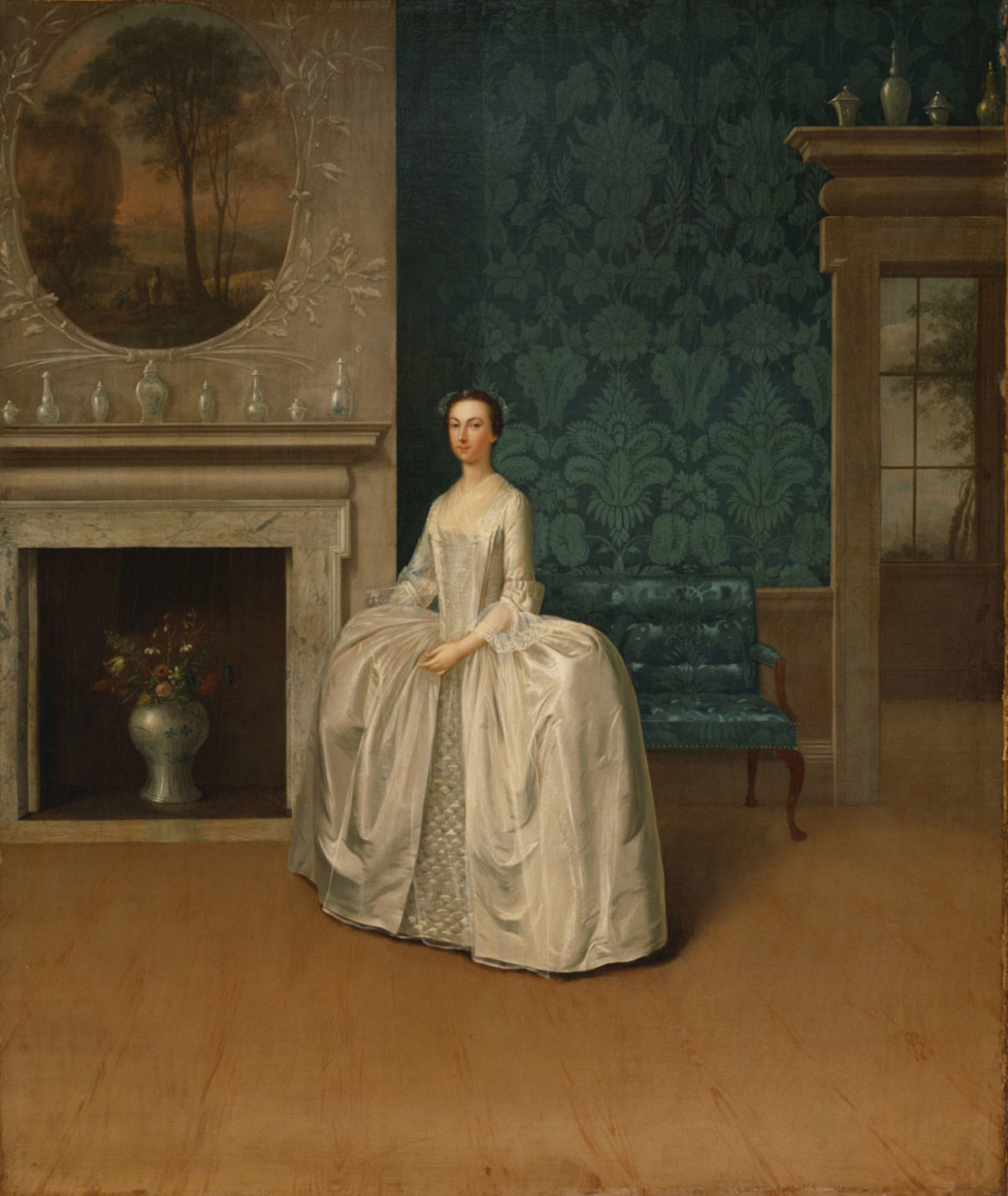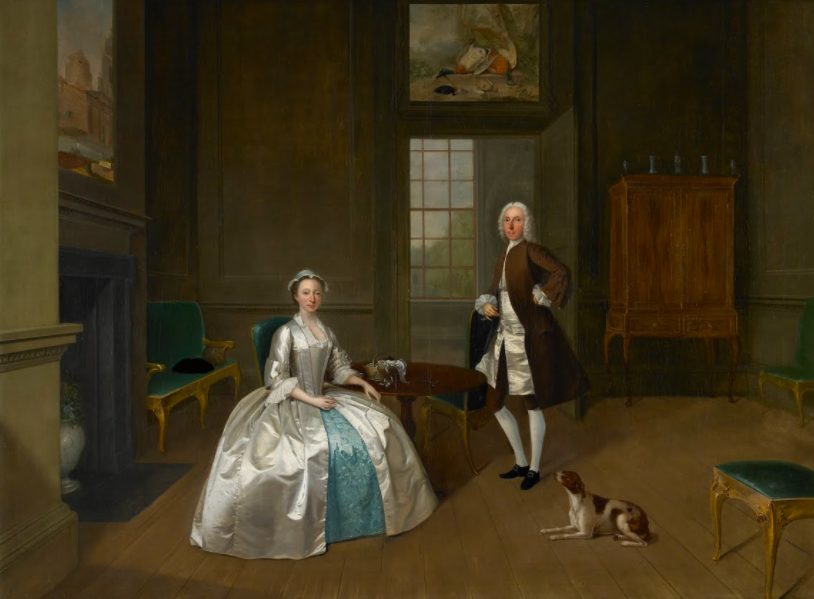About the Portrait
Arthur Devis was a successful and well-known practitioner of the genre of painting known as a ‘conversation piece,’ which is “an informal group portrait showing its subjects either conversing or engaged in some genteel pastime” (Baetjer 203). Devis was born in Preston, Lancashire, England in 1712. In the 1730s, he was an assistant in the studio of the famous Flemish painter Peter Tilleman. By 1737, Devis had become a portrait painter. In 1745, he established his own studio in London. This portrait was painted shortly thereafter and came just before his period of greatest productivity. According to Wikipedia, between 1748 to 1758, he received his greatest number of commissions for portraits, many showing sitters in landscapes.
As for the sitters, as Katherine Baetjer and Josephine Dobkin explain in their essay on the painting, Richard Bull was the second son of Sir John Bull and Elizabeth Bull of London and Ongar County, Essex, a village north of London. This portrait was commissioned by Richard Bull in 1747, which is also the year he married a widow named Mary Bennet. In 1747, Richard would have been 26, while Mary would have been 30. The couple both came from prosperous landed families. Mary’s family and first husband also came from Ognar. Mrs. Bull had a daughter and son from her first marriage, as well as two daughters with Richard (Baetjer 203); Devis later painted the couple again along with some of their children (Fig. 1).
Fig. 1 - Arthur Devis (English, 1712-1787). Mr. and Mrs. Richard Bull and Family, undated. Oil on canvas; 67 x 54 cm (26.3 x 21 in). Preston: Harris Museum and Art Gallery, PRSMG : P746.. Source: ArtUK
Arthur Devis (English, 1712-1787). Mr. and Mrs. Bull, 1747. Oil on canvas; 67 x 54 cm. New York: New York University, Institute of Fine Arts, Conservation Center. Source: Wikimedia
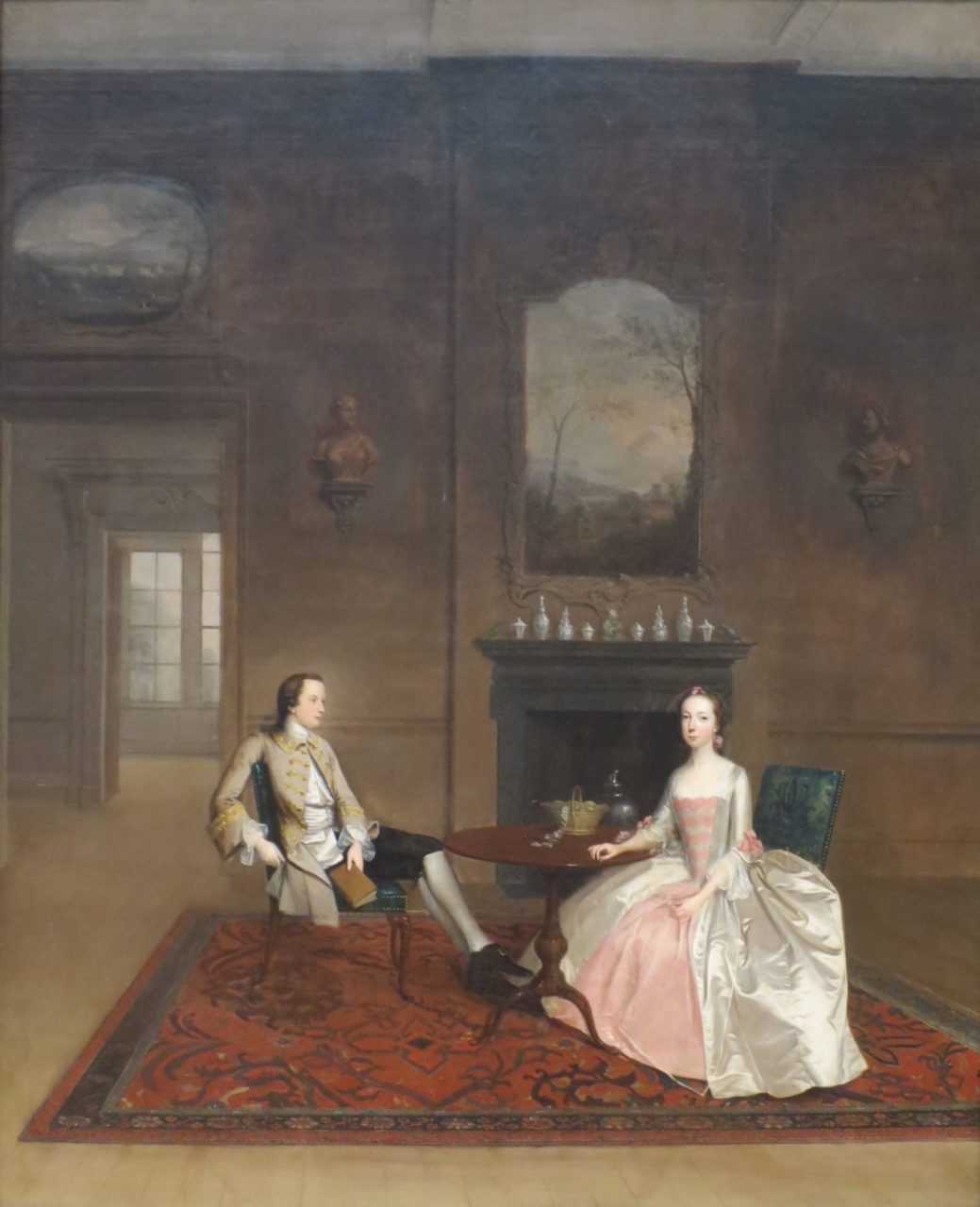
About the Fashion
Mrs. Bull is seen in panniers that are holding up the skirt of her satin robe out over her hips, and her seam is slightly puckered. True to the dress of the time, her bodice fits very tightly over her corset and is pleated at the sides of her V-shaped stomacher, which is decorated with ruching and rosettes made from the same fabric as her petticoat. According to the The Age of Comfort by Joan DeJean;
“Mrs. Bull’s thoroughly English dress, with its close-fitting, tightly boned bodice, for example, was designed to enforce the rigid posture that was considered a proof of social status. She was bound in, forced to sit bolt upright.” (19)
The sitters in this painting are young, and the viewer can tell by the way they are dressed, as well as accessorized. Mr. Bull is not seen wearing a white powdered wig, as around this time it was going out of style with the younger men. He is well proportioned, with his breeches and stockings being smooth and unwrinkled. As Batjer and Dobkin note of Mrs. Bull, she “was approaching her thirtieth birthday in 1747, but does not look it. Her hair is arranged close to her head and covered by a cap with a pink ribbon” (207). She wears an impossibly sheer apron over her open petticoat. Richard and Mary were both from wealthy families, so they would be able to afford fine clothing.
Fig. 2 - Arthur Devis (English, 1712-1787). Mr. and Mrs. Arthur Dashwood, 1750. Oil on canvas; 111 x 96.5 cm (44 x 38 in). Private Collection. Source: Pinterest
Fig. 3 - Arthur Devis (English, 1712-1787). A Lady and Three Gentlemen around a Harpsichord, ca. 1750. Oil on canvas; 128 x 102.8 cm (50.5 x 40.5 in). Private Collection. Source: Artvalue
Fig. 4 - Arthur Devis (English, 1712-1787). Lady Juliana Penn, 1752. Oil on canvas; 91.8 x 79.1 cm (36.3 x 31.3 in). Philadelphia: Philadelphia Museum of Art, 2004-201-2. Source: Philadelphia Museum of Art
Fig. 5 - Arthur Devis (English, 1712-1787). Mr. and Mrs. Atherton, 1743. Oil on canvas; 92 x 127 cm (36.2 x 50 in). Liverpool: Walker Art Gallery, WAG 1353. Source: ArtUK
Fig. 6 - Designer unknown. Mantua, 1747-65. White silk satin. chinoiserie embroidery, 'à disposition'. The Hague: Gemeentemuseum, 1006296. Source: Gemeente Museum
Portraits of Lady Juliana Penn (Fig. 4) and Mr. and Mrs. Atherton (Fig. 5) further attest to the fashionability of the décor and attire. A surviving white silk mantua (Fig. 6) has the same silhouette and sheen of Mrs. Bull’s dress, though it lacks the open petticoat. Like Mr. Bull, Mr. Dashwood, as well as two of the gentlemen in figure 3 also seem to be sporting their natural hair; only one man seems to be wearing a powdered wig, as he may be older than the rest of the men.
Thus, in the portrait at least, Mr. and Mrs. Bull appear to be quite fashionable, as they are wearing up to date clothing of a fine quality, featuring elaborate detailing that would have been expensive.
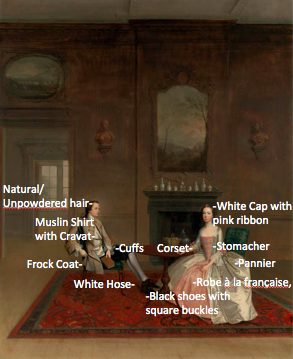
Diagram of referenced dress features.
Source: Author
References:
- “Arthur Devis.” Wikipedia, March 10, 2018. https://en.wikipedia.org/w/index.php?title=Arthur_Devis&oldid=829752963.
- Baetjer, Katharine, and Josephine Dobkin. “Mr. Devis and Mr. Bull.” Metropolitan Museum Journal 45 (2010): 203–9. https://resources.metmuseum.org/resources/metpublications/pdf/Mr_Devis_and_Mr_Bull_The_Metropolitan_Museum_Journal_v_45_2010.pdf.
- DeJean, Joan E. The Age of Comfort: When Paris Discovered Casual and the Modern Home Began. New York: Bloomsbury, 2013. http://www.worldcat.org/oclc/858312353.


